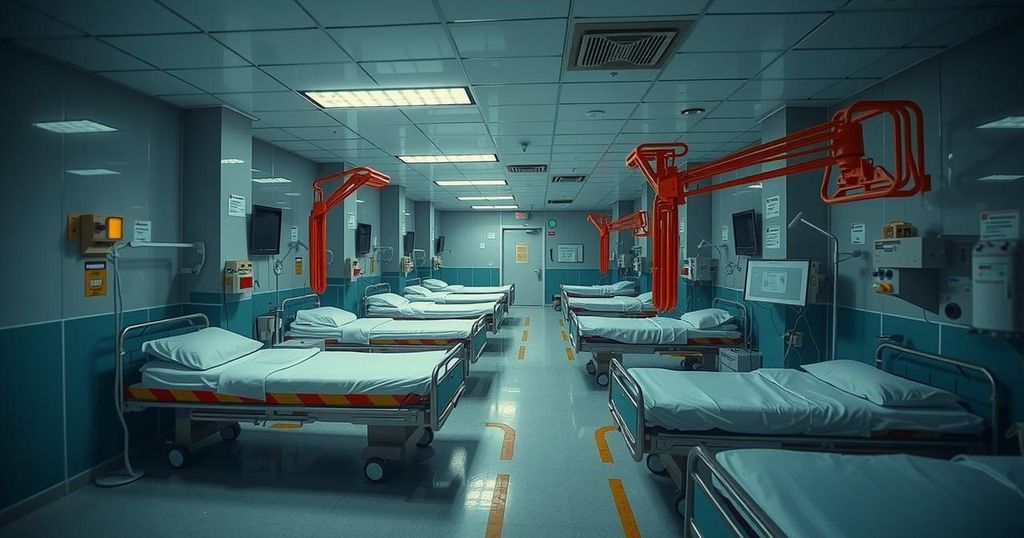This article discusses the importance of hospital preparedness in maximizing the benefits of earthquake early warning (EEW) systems. While these systems offer critical alerts before seismic activity, their effectiveness is hindered by inadequate preparedness protocols and resource limitations. Research by Sandra Vaiciulyte highlights the need for customized emergency protocols across different hospital units and emphasizes the significance of regular training drills to ensure a cohesive response during earthquakes, ultimately aiming to improve patient safety and outcomes in disaster situations.
The efficacy of earthquake early warning (EEW) systems, while promising, largely hinges on how well hospitals are prepared to respond to such alerts. Research conducted by Sandra Vaiciulyte at the Universidad Nacional Autónoma de México indicates that the potential of EEW systems to save lives is significantly affected by existing hospital protocols. Despite Mexico having one of the most advanced EEW frameworks globally, financial constraints inhibit many hospitals from establishing robust response mechanisms. As hospitals increasingly integrate EEW systems, it becomes clear that merely having such technology in place is insufficient without supportive emergency preparedness protocols. EEW systems, such as ShakeAlert in the United States, function by detecting ground movement and providing alerts seconds to minutes before seismic activity reaches an area. Although these warnings can effectively prompt protective actions, the variability in hospital protocols and preparedness levels can greatly diminish their utility. For instance, procedures differ across various hospital units, with customized protocols reflecting the unique needs of maternity wards, surgical units, and emergency rooms. Vaiciulyte’s qualitative study utilized interviews with stakeholders across U.S. and Mexican hospitals to assess how effectively they implement EEW protocols. Findings revealed significant gaps in readiness, especially concerning unsafe structural conditions, inadequate communication systems within hospitals, and the general lack of resources dedicated to earthquake response training. Importally, the research highlights the challenge hospitals face in balancing patient safety with staff safety amid emergencies, and emphasizes that effective evacuation protocols are critical. Furthermore, the interviews underscored that while staff reactions to early warnings are crucial, training and preparedness through regular drills can promote a more orderly and efficient response during emergencies. Vaiciulyte states, “I want to understand what practices there are in other countries,” recognizing that discrepancies in protocols necessitate a collaborative approach to disaster risk reduction. Overall, the study positions itself as a foundation for further quantitative research, advocating for a stronger, more unified framework that enhances overall hospital preparedness during seismic events. By addressing the identified deficiencies in current systems and fostering shared knowledge among diverse medical facilities, the potential of EEW systems to mitigate disaster impacts can be significantly improved.
Earthquake early warning systems are vital tools designed to alert populations of impending seismic activity, thus allowing individuals and institutions, particularly hospitals, to initiate protective actions. Countries such as Mexico and Japan have established advanced EEW systems, but the effectiveness of these systems can be greatly influenced by the preparedness protocols in place within hospitals. Factors such as financial limitations, resource allocation, and specific operational protocols can affect how well healthcare facilities respond to early warnings, ultimately impacting patient safety during earthquakes. This context is crucial for understanding the findings of Vaiciulyte’s study, which explores the existing gap between EEW technology and hospital emergency management capabilities.
In conclusion, the success of earthquake early warning systems in hospitals is contingent upon well-established and practiced emergency protocols, supported by adequate resources and training. While the integration of EEW systems holds promise for enhancing patient safety during seismic events, the research underscores the need for hospitals to develop comprehensive, unit-specific response strategies and to engage in regular preparedness drills. By emphasizing a systematic approach to disaster response, hospitals can maximize the effectiveness of early warnings, reducing potential casualties and improving overall emergency management in the face of natural disasters.
Original Source: temblor.net







